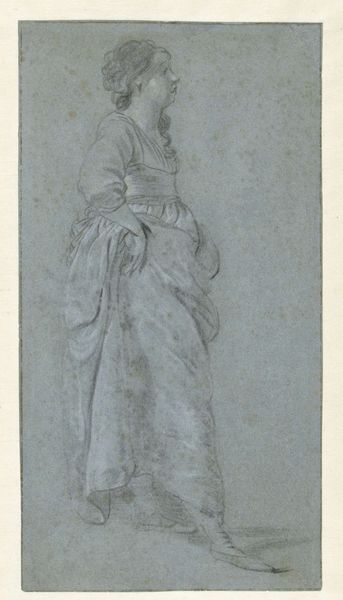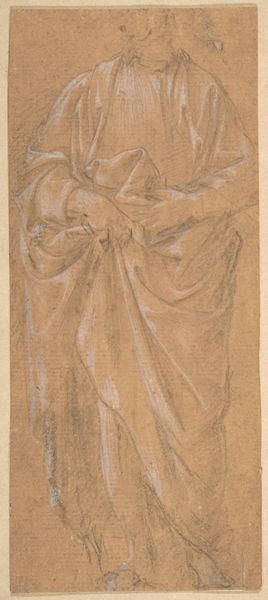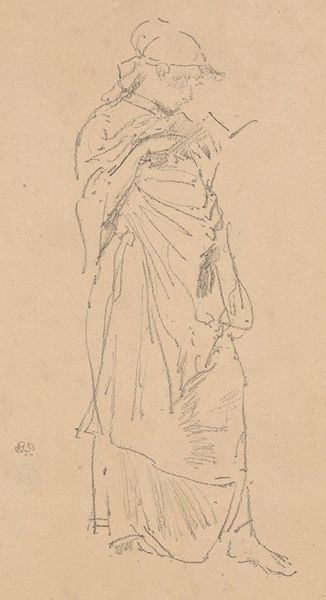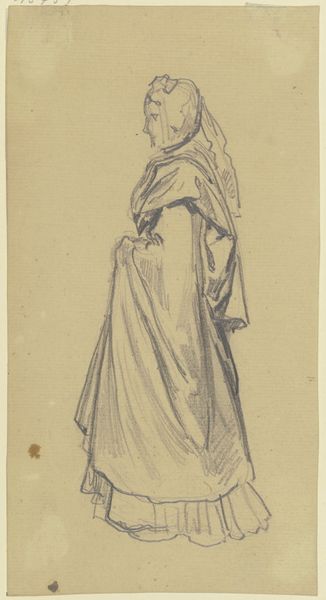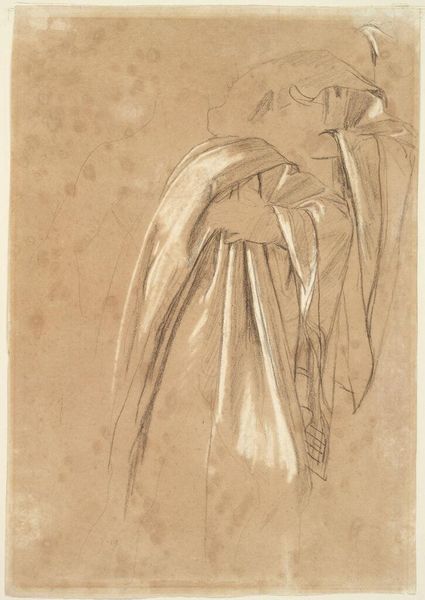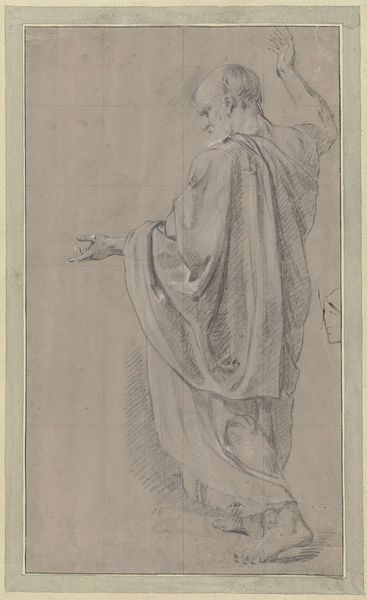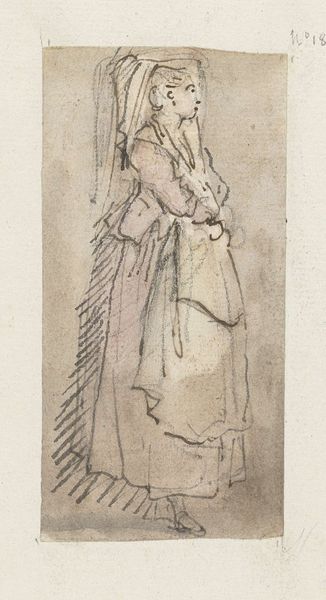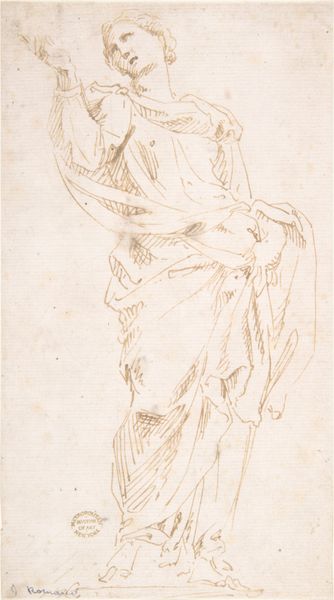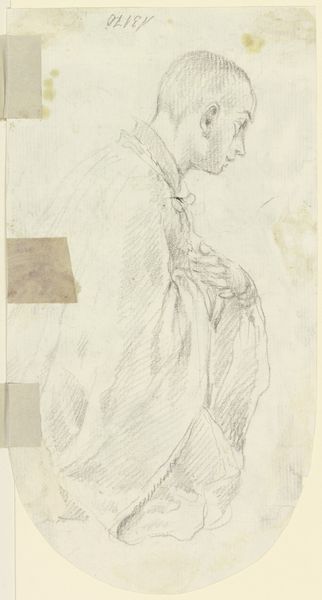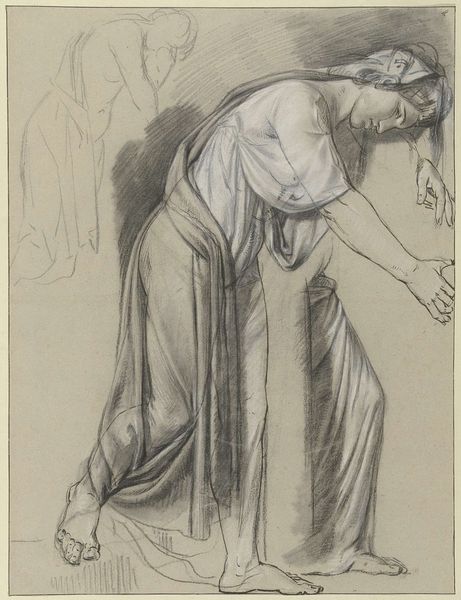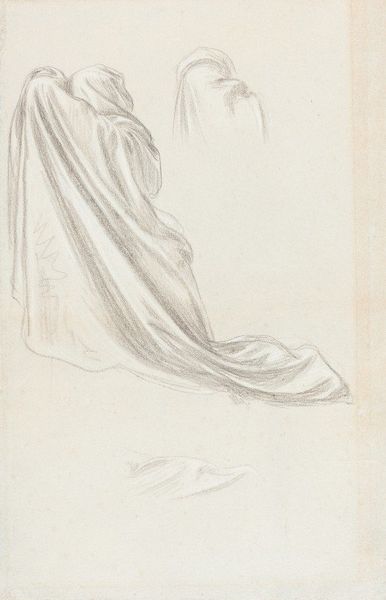
drawing, paper, pencil
#
portrait
#
drawing
#
pencil sketch
#
mannerism
#
figuration
#
paper
#
11_renaissance
#
pencil
#
sketchbook drawing
#
history-painting
Dimensions: height 314 mm, width 225 mm
Copyright: Rijks Museum: Open Domain
Editor: This is a drawing entitled "Rugfiguur van een priester," or "Figure of a Priest Seen from the Back," made between 1594 and 1615 by Giovanni Andrea Ansaldo. It's a pencil drawing on paper and it strikes me as both detailed and somehow unfinished. What do you see in this piece? Curator: Immediately apparent is the artist's emphasis on line. Note the economy and precision with which Ansaldo captures the texture and weight of the priest's garments. Consider the layering of these lines, building up areas of shadow and suggesting volume. The colour of the paper too, becomes as crucial to the visual composition as the artist’s actual marks. What relationship do you see between the figure and the negative space of the background? Editor: I see how the pale blue colour is almost as present as the figure, but it also flattens the image. If the paper was a dark tone, the priest could be emerging from the gloom, rather than seemingly etched onto the surface. It makes the folds in the robes stand out a bit more because they contrast less than the empty space. Curator: Precisely! The artist consciously uses this tonal relationship to focus our attention on the formal elements: the interplay of line, shape, and texture. The lack of facial features compels us to dwell on the purely aesthetic qualities. Can you detect ways that the shapes created by folds are balanced through the figure’s body? Editor: It feels like the wider curve of the upper sleeve, on the figure's left, is repeated by the fabric bunched around the ankle. Also, it's interesting to consider why the artist has given much more attention to detail in the bottom third of the garment. I mean, those tassels, wow! Curator: A telling observation, especially on a quick drawing on paper. Ansaldo seems invested in inviting you, the viewer, to truly analyze the material composition of the cloth depicted. Ultimately, we've been exploring not simply a representation of a priest, but a self-conscious study in form and materiality. Editor: I hadn't considered how the artist guides your gaze in this sketch! This exploration was illuminating.
Comments
No comments
Be the first to comment and join the conversation on the ultimate creative platform.
